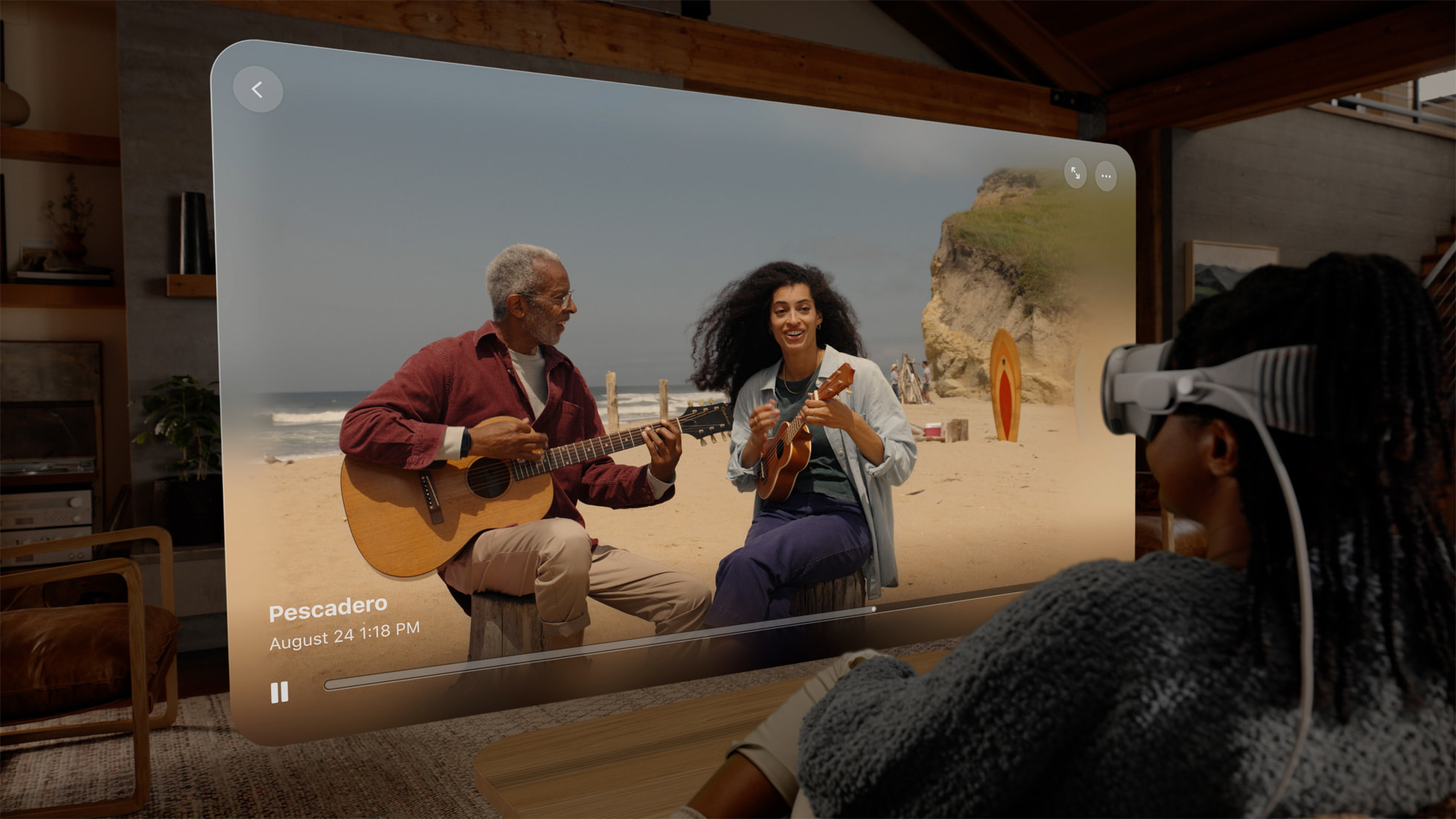The Apple Vision Pro has arrived and sent ripples to the technology community. This high-end mixed reality (MR) headset promises to revolutionise how we work, play, and interact with the digital world. As a developer or business owner, should I develop an app for the Apple Vision Pro and capitalise on the early adopter market? Or should I wait until the device is more popular and has proven to be the future of tech?
Below, the Zudu team explains the pros and cons of entering Apple Vision Pro app development to help you make the right decision for your business.
The benefits of the Apple Vision Pro
Let’s face it: the Apple Vision Pro looks great. It’s packed with features that make it an attractive platform for app development. Here are some reasons why developing an app for the visionOS platform (Apple’s custom AR/VR software) could make sense.
- The most obvious benefit is that the Vision Pro features high-resolution displays, powerful processors, and advanced sensors like LiDAR. These features offer immersive experiences with seamless interaction between the physical and digital worlds and could unlock incredible opportunities for your brand and customers.
- Another benefit of developing Vision Pro is using the vast and established iOS developer community and tools. Developers familiar with Xcode and Swift can easily transition to creating MR experiences, and some iOS apps automatically convert.
- The mixed reality landscape is wide open for exploration. Developers can be pioneers in creating never-before-seen applications that push the boundaries of what’s possible and position their apps and businesses to become market leaders. Developing Vision Pro apps could position you at the forefront of a technological revolution—just think back to the beer app on the first iPhone and iPod Touch.
Challenges of the Apple Vision Pro
Before diving headfirst into an MR development project, it’s crucial to acknowledge the challenges associated with Apple Vision Pro app development.
- The Apple Vision Pro’s hefty price tag potentially limits its user base. At $3,500 in the United States, developing for a niche market can be risky, as the return on investment might be slow. The device is only available for purchase in the United States, though a UK rollout is expected soon.
- Mixed reality app development is a complex undertaking. Developers must master new skills and tools to create spatially aware applications that function flawlessly within the MR environment, and this can be both time-consuming and expensive.
- MR experiences thrive on high-quality 3D assets and immersive content. Creating engaging content can be resource-intensive for potentially limited returns.
Identify your niche
Within the Apple Vision Pro landscape, developers who can target specific niches have opportunities. Enterprise Applications, for example, are ideal for the Apple Vision Pro, as the device has the potential to revolutionise workplace collaboration, remote training, and product design. Developing specialised MR apps for these areas could be lucrative.
The same is true in the world of education and training. Imagine interactive educational experiences where students can explore historical sites in VR or dissect virtual 3D models in science class. Educational apps could have a significant impact on the learning process.
Those operating in entertainment and gaming could also find success as early adopters of Apple Vision Pro. The Vision Pro’s immersive capabilities open doors to groundbreaking gaming experiences. Developers who can create engaging and interactive games could capture a significant share of the market.
By focusing on a specific niche and developing an app that addresses a clear need, developers can mitigate the risks associated with the limited user base—though there’s no guarantee that anything they create will succeed.
Ultimately, the decision to develop apps for the Apple Vision Pro boils down to carefully evaluating your resources, skills, and target audience. Ask yourself these questions:
- Do you have the expertise, or are you willing to invest in acquiring the necessary skills for MR app development?
- Does your app idea address a specific need within a niche market that can afford the Apple Vision Pro?
- Are you prepared for a potentially long development cycle and a slow ROI?
If you can answer these questions with a resounding “yes,” then developing content for the Apple Vision Pro could be a rewarding and lucrative venture. The MR landscape holds immense potential, and early adopters who can create compelling and innovative apps stand to be pioneers in shaping the future of this exciting technology.
However, if the challenges outweigh the potential rewards for your specific situation, it might be wise to wait and observe the growth of the Apple Vision Pro user base before taking the plunge. It may take several years before MR technology becomes mainstream.
If you’re looking for support with app development, reach out to the team at Zudu today.



